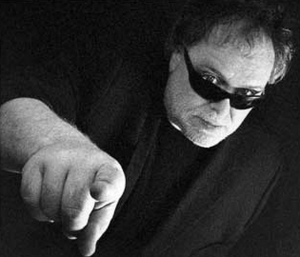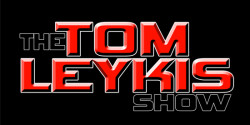I’m always interested in learning more about broadcast programs and personalities that made the transition to being online-only. So when a representative for veteran talk show host Tom Leykis contacted me about an interview my curiosity was piqued. I wanted to learn how a highly rated and well compensated host who broadcasted in the nation’s #2 market fares in a new medium.
The Tom Leykis Show is all-human all the time, and can’t be replaced by an algorithm. So I also wanted to know if he thinks bringing this sort of radio talk online is sustainable.
To be frank, I only knew a little of Leykis before this, mostly that his syndicated program was a very popular fixture in his local market of Los Angeles from 1994 until 2009, when home station KSLX flipped its FM talk format to hit music. He is often considered one of the first “shock jocks,” though his specialty is interacting with callers, which is something he has preserved in moving the Tom Leykis Show online.
Betting on Internet Radio

Tom Leykis
Right off the bat he told me, “We just committed to a third year of doing (The Tom Leykis) show. What I mean is we have signed a lease on our studio for a third year.”
Yet, he’s up front that, “We have not made a profit yet.”
Still, he continued, “we cut our losses by 50% and costs by 20%,” this last year. “Revenue is up 65% and we sold over $840,000 of Amazon merchandise,” through affiliate sales.
Talking with Leykis I was struck by how deeply knowledgeable he is about the fiscal and technical details of running an online radio network. He is not just a host. Leykis also made it clear that while the show has his name on it, the operation is a business venture.
“Look, I can retire young,” Leykis said. “I’m doing this because we are on the cusp of making a lot of money at this. You have to have a gut check at some point. Am I doing this for my ego? Or am I doing this to promote this new model?”
Even though he created his New Normal Network of music and talk programming soon after departing the airwaves, his contract with CBS Radio kept him from broadcasting his own program until 2012. Then, in April of that year, The Tom Leykis show launched online.
The program airs live weekdays at 3 PM PT, and can also be heard in a continuous 24/7 stream of recent shows the rest of the time. Leykis offers the program as a downloadable podcast, but unlike his former KSLX colleague Adam Carolla, it’s only accessible to paid subscribers.
Stream vs. Podcast
I asked him why he chose to offer a free continuous broadcast stream instead of a free podcast.
“A lot of people have no idea how to access (online audio) content, and I want them to access my content regardless of expertise,” he explained. “The medium is not important.”
Leykis continued, “I’m in the content business, and I’m giving them the path of least resistance. A lot of people are still comfortable with the radio model. You turn it on, maybe someone is mid-sentence, but you continue to listen.”
He said the show has 1,500 on-demand podcast subscribers who pay either $11/month or $110/year, while the free 24/7 stream had “140,000 to 150,000” unique listeners last year, with over 9,000,000 total connections. Clearly, the live ad-supported stream is much more popular with Lekyis’s listeners.
Popular enough, in fact, that the OC Weekly named The Tom Leykis Show “Best Radio Show Orange County 2013.”
Sticking with a Proven Model
Listening to the program I found that it very much sounds like a commercial talk radio program, not a podcast. Someone tuning in for the first time would be forgiven for mistaking it for a terrestrial broadcaster’s stream. “My goal is to make it sound as much like what people are familiar with,” Leykis said. “It’s professional.”
His approach is definitely modeled on his decades of experience in commercial radio. He has a staff of four, including a call screener, producer and engineer who allow the host to focus on producing a tight live show every day, while the production team integrates traditional radio elements like live reads, pre-recorded spots, stingers, bumpers, music beds, and, of course, listener calls.
These phone-ins are a particular hallmark of the show and the move to online certainly freed Leykis–and his producers–from worrying about FCC language constraints. However, he doesn’t emphasize that aspect much. “What could you possibly say that would shock people more than Rotten.com?” he asked. “You can’t use vulgar language as the sole reason to get people to listen. We just talk like normal people and let callers speak the way they would speak.”
Besides being online, the biggest change is that Leykis is going it alone, without the backing of a bigger company or network. “Everyone is an internet entrepreneur here,” he said. “I believe in my product and my brand.”
Advice for Future Broadcasters & Podcasters
I asked Leykis if he has any advice for a would-be broadcaster, looking to get into the business. His response was immediate and unequivocal: “Do not waste your time with the radio business, it is in irreversible decline.” Instead, he advised, “Get up and running as fast as possible,” with your own online program or podcast.
Then, “Pay attention to the professionalism of people who’ve been doing this a long time. Sounding lousy was quaint in the early years. Now, let’s face it, you have big companies getting involved. For instance, NPR’s content sounds spectacular.”
Moreover, he advised, “If you want to make money, if you want to make it a business, then treat it as a business. Release (your show) at the same time,” every day or every week. Remember that “in the radio business if you don’t show up you get fired.”
Making It Fly
In wrapping up Leykis reiterated “If I didn’t think this had a chance of making money I wouldn’t have renewed.”
That’s as true for the online radio business as it is broadcast. Though there are plenty of non-commercial and non-profit producers on the internet, income sure helps pay hosting fees, bandwidth bills and put food on the table. Income, profit and sustainability are bound together.
The question is, of course, what models will successfully sustain human-driven online radio. Tom Leykis has one, and it will be interesting to see how his next year goes; we all have an opportunity to learn from it.



